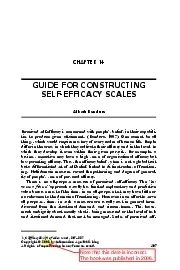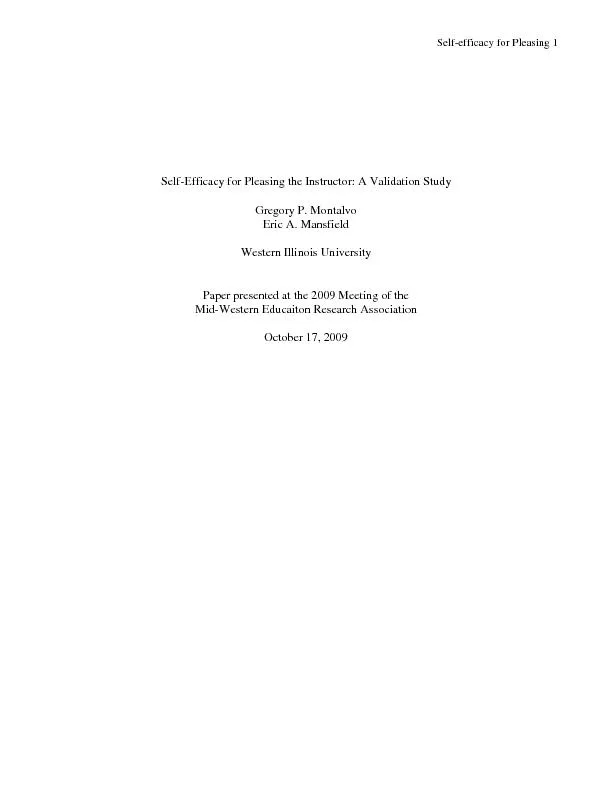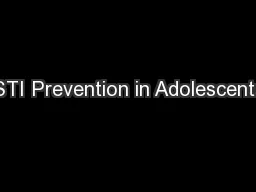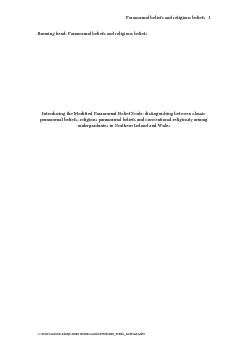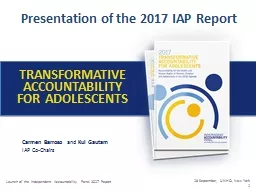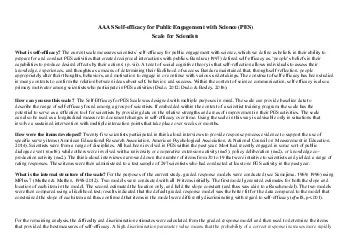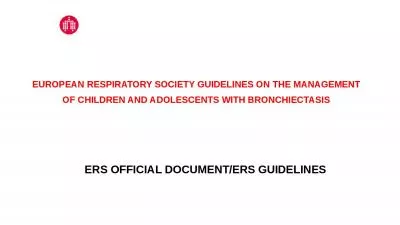PDF-SelfEfficacy Beliefs of Adolescents 307337Copyright 2005 by Informat
Author : elysha | Published Date : 2021-09-23
307A BANDURAAlbert BanduraPerceived selfefficacy is concerned with peoples beliefs in their capabilities to produce given attainments Bandura 1997 One cannot be
Presentation Embed Code
Download Presentation
Download Presentation The PPT/PDF document "SelfEfficacy Beliefs of Adolescents 3073..." is the property of its rightful owner. Permission is granted to download and print the materials on this website for personal, non-commercial use only, and to display it on your personal computer provided you do not modify the materials and that you retain all copyright notices contained in the materials. By downloading content from our website, you accept the terms of this agreement.
SelfEfficacy Beliefs of Adolescents 307337Copyright 2005 by Informat: Transcript
307A BANDURAAlbert BanduraPerceived selfefficacy is concerned with peoples beliefs in their capabilities to produce given attainments Bandura 1997 One cannot be allthings which would require mastery. 1994 Selfeffic acy In V S Ramacha udran Ed Encycloped ia of human behavior Vol 4 pp 7181 New York Academic Press Reprinted in H Friedman Ed Encycloped ia of mental he alth San Diego Academic Press 1998 brPage 2br I Sou rces of Se lfE Long-Acting . Reversible . Contraception . (LARC. ) . A Clinical Update. The information contained in this slide set is designed to aid practitioners in making decisions about appropriate obstetric and gynecologic care. This information should not be construed as dictating an exclusive course of treatment or procedure. Variations in practice may be warranted based on the needs of the individual patient, resources, and limitations unique to the institution or type of practice. . Chapter 15 History Alive!. Pages 143-151. 15.1 Introduction. Hinduism . – India’s first major ____________.. One of the basic beliefs of Hinduism is ________________. . Dharma. stands for Law, obligation, and duty. . ��Selfefficacy for leasing Abstracte purpose of this study was to develop and validate the construct of selfefficacy for pleasing the instructor (SEP) and explore its usefulness as an alternative to g and. Long-Acting Reversible Contraceptives. (LARC). Fareeda Haamid, DO, FAAP. Nationwide Children’s Hospital . Section of Adolescent Medicine. The Ohio State University. Assistant Professor of Clinical Pediatrics. 1 C: \ Users \ Leslie \ Desktop \ SusanThomas \ Articles \ Williams_E \ Will_LewisAPA.doc Running head: Paranormal beliefs and religious beliefs Introducing the Modified Paranormal Belief Scale: disti Presentation:. Presenter:. . . Arthur . Tabachneck. Copy and Paste from Excel to SAS. Art holds a PhD from Michigan State University, has been a SAS user . since 1974, . is president of the Toronto Area SAS . Stephanie Zaza, MD, MPH. Director, . Division of Adolescent and School Health. National Center for HIV/AIDS, Viral Hepatitis, STD, and TB Prevention. Defining Adolescence. Developmental stage. Physical, intellectual, emotional, and psychological changes. The 2011 Census: Different Faiths and Beliefs in Britain. In the 2011 Census, Christianity was the largest religion, with 33.2 million people (59.3 per cent of the population). The second largest religious group were Muslims with 2.7 million people (4.8 per cent of the population). Report. TRANSFORMATIVE ACCOUNTABILITY. FOR ADOLESCENTS. Carmen Barroso . and. Kul Gautam. I. AP Co-Chairs. IAP Members. Carmen Barroso, Co-Chair. Kul Chandra Gautam, Co-Chair. Brenda Killen. Alicia E. For the remaining analysis the difficulty and discrimination estimates were calculated from the graded response model and then used tothat provided the best measures of selfefficacy A high discriminat Maria L. Morris-Groves MSEd.. Adolescent, Women and Children . Services. Margaret Smith MA. Adolescent, Women and Children Services. Today’s. Discussion. An overview of the National Association of State Alcohol and Drug Abuse Directors. Self-Harm to Self-Care. EMAIL: mary@pieta.ie. PHONE: 01-601 0000. WEB: www.pieta.ie. Facilitated by Marguerite . Kiely, Pieta House. OUR VISION:. A world where suicide, self-harm and stigma have been replaced by hope, self-care and acceptance.. ERS OFFICIAL DOCUMENT/ERS GUIDELINES. Disclaimer. The guidelines published by the European Respiratory Society (ERS) incorporate data obtained from a comprehensive and systematic literature review of the most recent studies available at the time. Health professionals are encouraged to take the guidelines into account in their clinical practice. However, the recommendations issued by this guideline may not be appropriate for use in all situations. It is the individual responsibility of health professionals to consult other sources of relevant information, to make appropriate and accurate decisions in consideration of each patient.
Download Document
Here is the link to download the presentation.
"SelfEfficacy Beliefs of Adolescents 307337Copyright 2005 by Informat"The content belongs to its owner. You may download and print it for personal use, without modification, and keep all copyright notices. By downloading, you agree to these terms.
Related Documents

